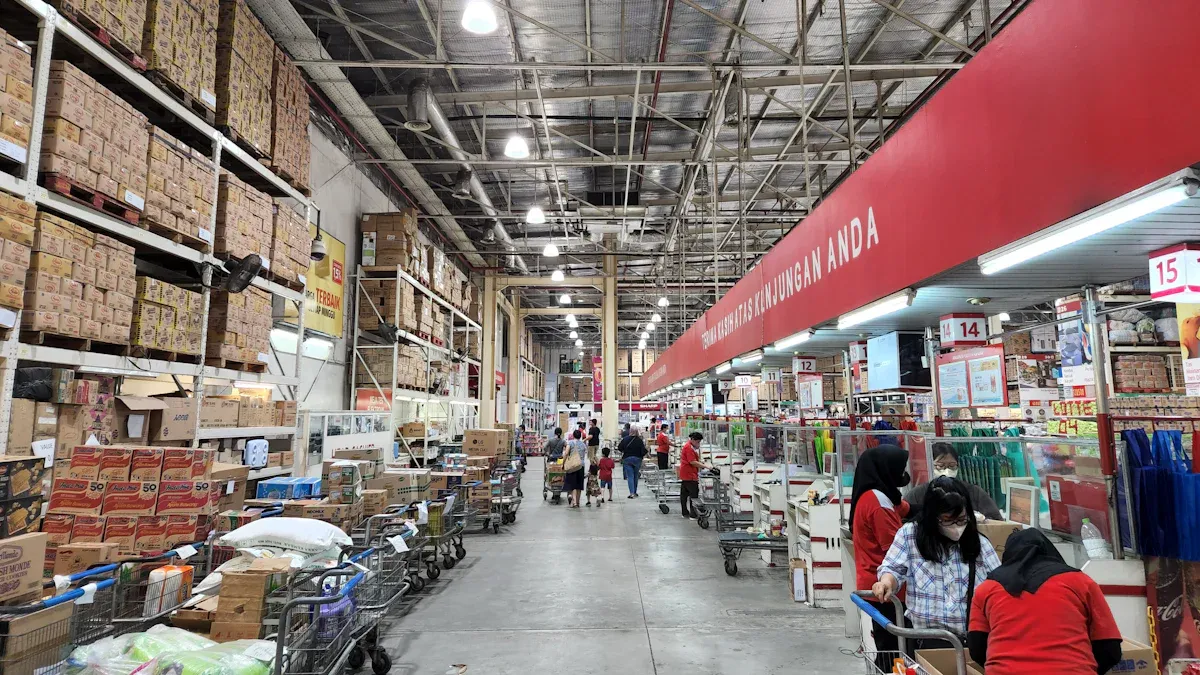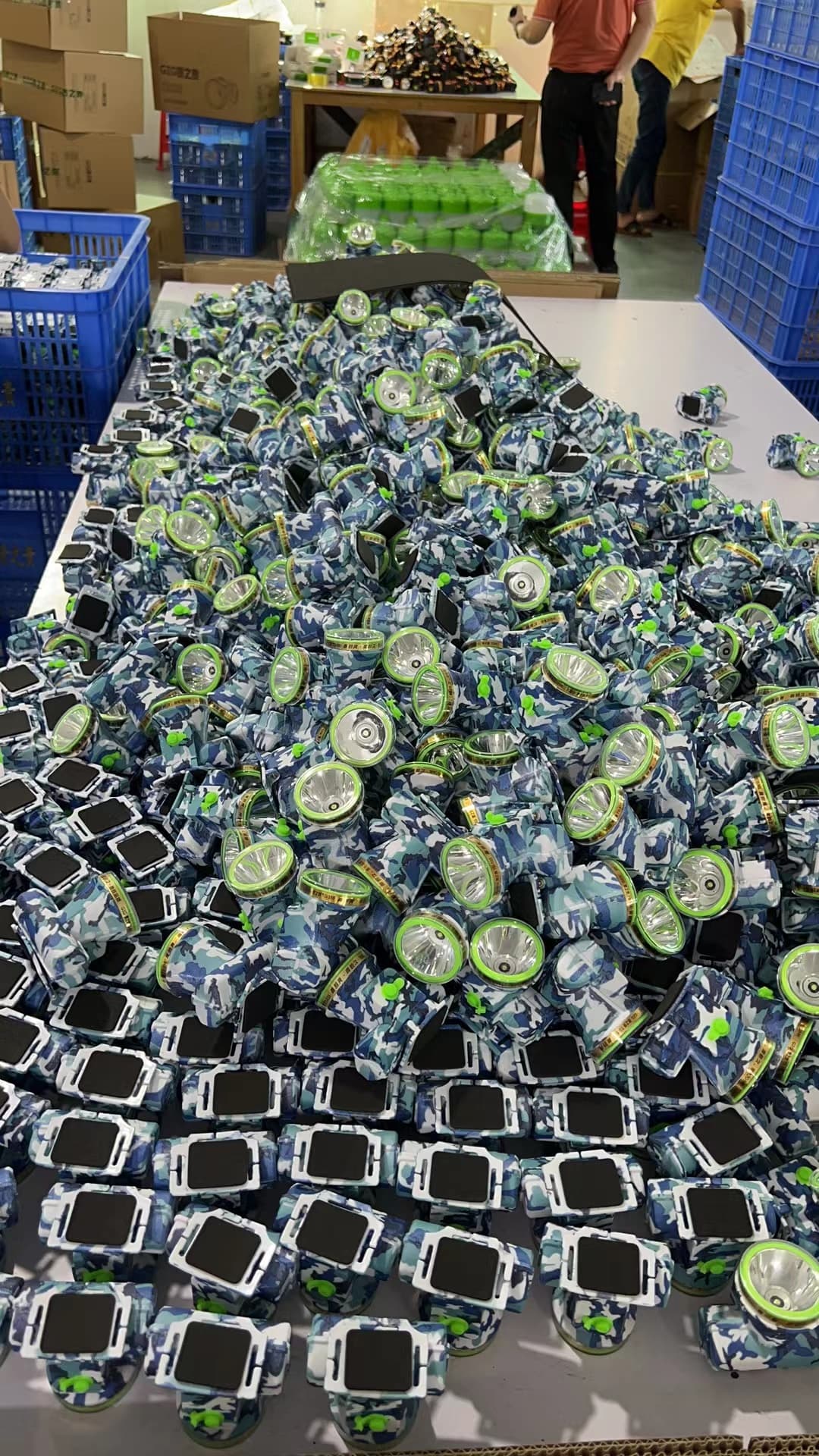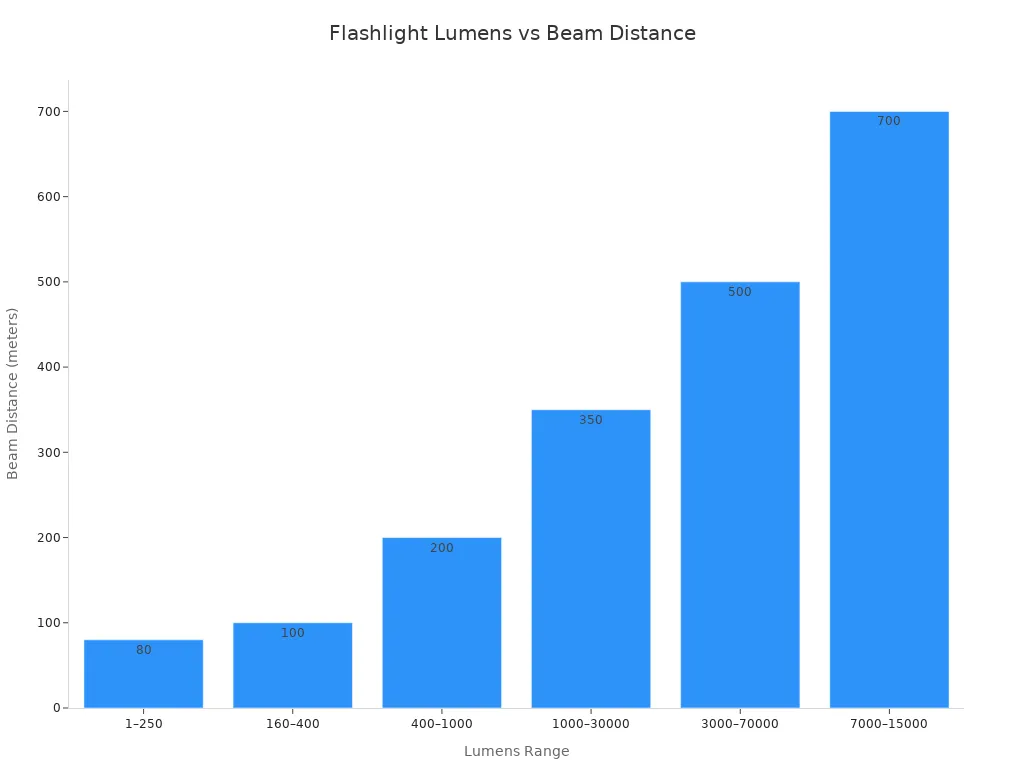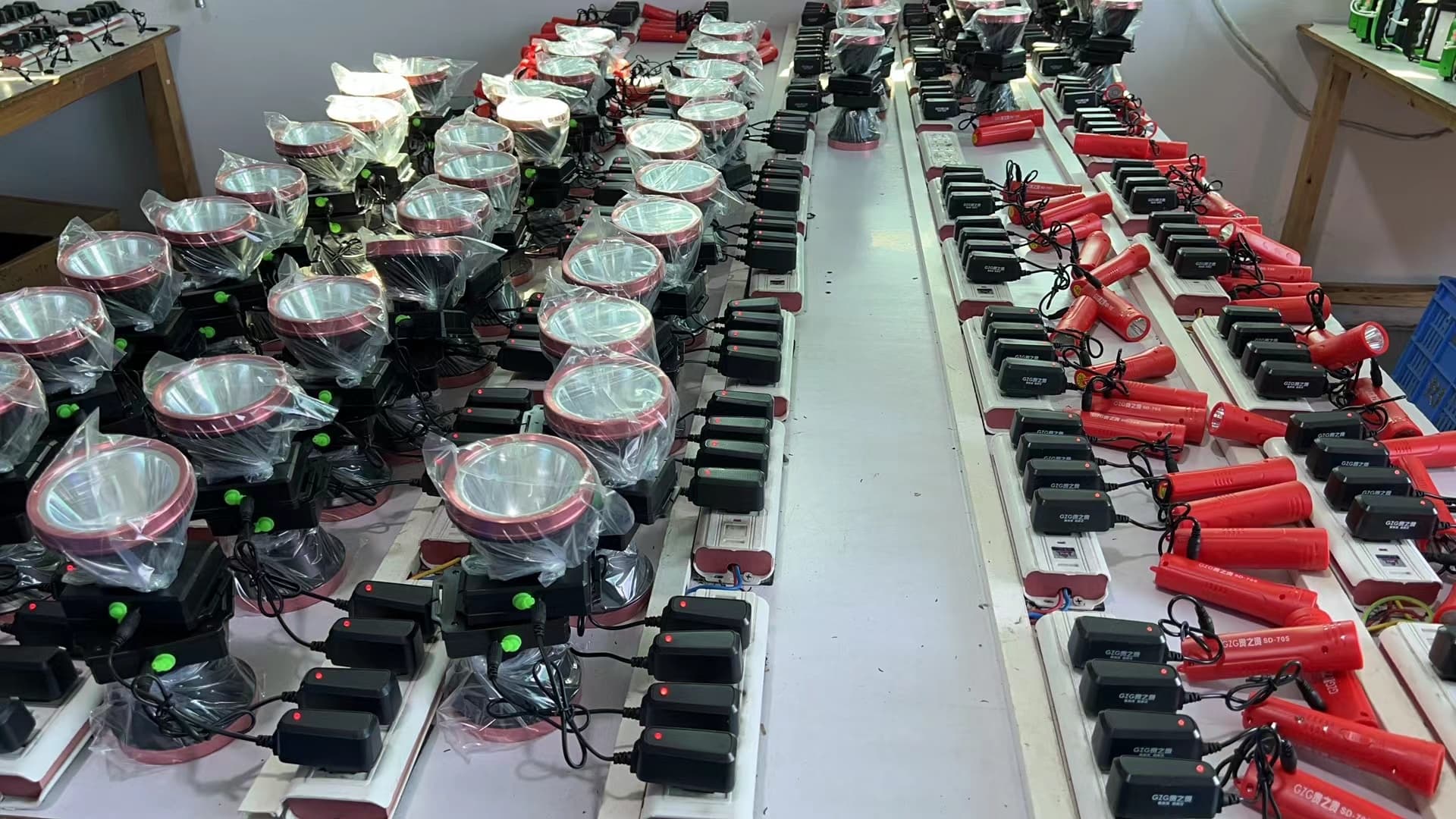Why Not All Flashlights Are Created Equal: What to Look for in Wholesale Bulk Flashlights Orders

Many people believe all flashlights are the same, especially when buying wholesale bulk flashlights. You can have problems if you buy flashlights without checking their quality or if you do not use trusted suppliers.
Broken flashlights in big orders lead to more complaints, more returns, and higher costs.
Bad quality hurts your reputation and makes customers lose trust.
Pick suppliers who care about quality so you get good value every time.
Key Takeaways
Pick flashlights that use strong materials like aluminum alloy. Choose ones with LED lights because they last longer and work better. - Find suppliers who give good quality and talk clearly with you. Make sure they offer warranties and help when needed. This helps you avoid problems and saves money. - Look for hidden costs before you buy. Test some samples first to check the quality. This way, you will not get any surprises.
Flashlight Quality Factors

Build Materials
When picking flashlights for your business, check what they are made of. Most wholesale flashlights use aluminum alloy or plastic. Aluminum alloy is strong and light. It does not rust easily. This material keeps your flashlight safe from drops and bumps. It also works well in wet places. That is why it is good for outdoor and work use. Some expensive flashlights use aerospace-grade aluminum. This makes them even tougher. Plastic flashlights are cheaper and lighter. But they do not protect as well. They also do not last as long. If you want flashlights that last, pick aluminum alloy.
The light source is important too. LED technology is now the main choice for multitool flashlights. LEDs last longer and are tougher than LEP. LEDs use solid parts and heat sinks. This helps them handle heat better. Your flashlight will work longer and better in hard places.
Feature | LEP (Light Emitting Plasma) | LED (Light Emitting Diode) |
|---|---|---|
Build Materials | Polymeric materials and plasma bulbs | Semiconductor die and solid-state components |
Lifespan | 20,000-30,000 hours | 50,000-100,000 hours |
Durability | Good, but contains fragile plasma bulbs | Excellent, solid-state components enhance durability |
Thermal Management | Limited encapsulation and heat management | Includes encapsulation and heat sinks |
Tip: Always look for certifications and quality marks when buying flashlights. These show the flashlight is safe and strong.
Brightness and Lumens
Brightness is a key thing to check in flashlights. We measure brightness in lumens. The right number of lumens depends on how you use the flashlight. For most work jobs, get at least 500 lumens. If you need to see far or work outside, pick 1000 lumens or more. Multitool flashlights with different brightness levels are helpful for many places.
Use Case / Task Type | Recommended Lumen Range | Example Flashlights and Their Lumen Output |
|---|---|---|
General Industrial Use | At least 500 lumens | BIG Larry 600 (600 lumens) |
Detailed, Outdoor, Specialized | 1000 lumens or more | Fenix PD36R (1600 lumens), Milwaukee 2162 (1100 lumens), Luxtreme MZ60 Blueline (1000 lumens) |
Flexibility | Adjustable brightness | Recommended for various environments |
Flashlights with high lumens can light up big spaces fast.
Lower lumens save battery and are good for close work.
Multitool flashlights with many modes let you pick the right brightness.

Note: High lumens look cool, but you need to balance brightness, battery life, and heat for best use.
Battery Type
Battery type changes how well your flashlight works and how much it costs. You can pick rechargeable or disposable batteries. Disposable batteries are cheaper at first and last a long time on the shelf. They are good for emergency kits or flashlights you do not use much. But you will spend more money over time because you need to buy new ones. They also make more waste.
Rechargeable flashlights cost more at first but save money later. They are better if you use flashlights a lot. You do not need to buy new batteries often. Rechargeable batteries are also better for the planet. Many businesses use both types. They use rechargeable for daily work and disposable for backup.
Battery Type | Advantages | Disadvantages |
|---|---|---|
Rechargeable Batteries | Lower long-term costs, suitable for high power use, better for environment | Higher initial cost, needs charging equipment |
Disposable Batteries | Long shelf life, ready to use anytime, no charging needed | More expensive over time, creates more waste |
Safety tip: Always follow the maker’s rules for charging and storing batteries. This helps stop leaks or damage.
IP Rating
The IP rating tells you how well a flashlight keeps out water and dust. This is very important for outdoor, work, or emergency flashlights. A higher IP rating, like IP65, IP67, or IP68, means the flashlight can handle tough places. Flashlights with high IP ratings break less from water, dust, or rust. This helps you meet safety rules and keeps your flashlight working longer.
IP65 or higher is best for work and outdoor use.
High IP ratings lower the chance of short circuits and rust inside.
Picking the right IP rating saves money and keeps your flashlights working anywhere.
Always check the IP rating and look for certifications. This makes sure your flashlights are safe and strong for your business.
Choosing Wholesale Bulk Flashlights

Reliable Suppliers
You need to pick suppliers you can trust when buying flashlights in bulk. Not every supplier gives you the same quality or service. First, check what other buyers say about them. Read reviews and look for feedback. Good suppliers have a history of happy customers and talk clearly with you.
Where the flashlights are made can change their quality. Some countries have strict rules for safety and labels. Suppliers from these places often sell better products. Always ask for papers like CE, UL, or RoHS. These show the flashlights are safe to use.
If you buy from another country, see if the supplier can fill big orders. Good suppliers can make enough flashlights for you. They also tell you when your order will arrive and help with shipping. If you buy from overseas, make sure the supplier knows the customs rules. Missing papers or wrong labels can slow down your order.
Here is a table to help you check suppliers:
Criteria | Explanation |
|---|---|
Product Quality | Look for strong flashlights with safety certifications. |
Customization Options | See if you can add your logo or change the design. |
Pricing | Compare prices but do not pick low quality to save money. |
Production Capacity | Make sure the supplier can make enough flashlights for you. |
Reputation | Read reviews and check the supplier’s past work. |
After-Sales Support | Ask about returns and warranty. |
Delivery & Logistics | Check shipping choices and how long delivery takes. |
Customer Support | Pick suppliers who answer your questions fast. |
Business Credentials | Make sure they have the right licenses and papers. |
Backup Suppliers | Have other suppliers ready in case of delays. |
Facility Visits | Visit the supplier if you can to see their work. |
Long-Term Relationships | Build trust for better deals and service. |
Tip: Ask for samples before you buy a lot. This lets you check the quality yourself.
When you buy flashlights from other countries, plan for extra costs. These can be storage, shipping, or customs fees. Good suppliers will tell you about all costs before you order.
Warranty and Support
Warranty and support are very important when you buy many flashlights. A good warranty keeps your money safe. Most good flashlights have a warranty for 1 to 3 years. Expensive brands may give you 3 years, but cheaper ones often give just 1 year. The warranty covers problems from making the flashlight, not if you break it.
After-sales support matters too. Good suppliers help you with returns, repairs, or getting a new flashlight. Fast and friendly help makes you trust them and want to buy again. If you have a problem, good support fixes it fast. This helps your business keep running.
Warranty and support help you get the most for your money. You do not lose money on broken flashlights. You also save time because you do not have to fix problems alone. Suppliers who help you want to work with you for a long time.
Note: Brands like Fenix, Streamlight, and Maglite have strong warranties and support. Many businesses pick them for big orders because of this.
Customization Options
Customization makes your wholesale flashlights more special. Many suppliers let you put your logo, pick colors, or design the box. Custom flashlights are good for branding, gifts, or events. They help your business get noticed.
When you buy flashlights, ask about ways to customize them. Make sure the supplier can follow your ideas for labels and boxes. This helps with rules and makes your brand stronger. Custom labels with barcodes also help you track your flashlights.
Good suppliers show you samples of custom flashlights before you buy a lot. This lets you check the look and quality. Talking clearly with your supplier helps you get what you want.
Customization gives you more value for your money. It turns a simple flashlight into a tool for marketing and customer loyalty.
Avoiding Common Pitfalls
Hidden Costs
When you buy many flashlights at once, you might find extra costs. These costs can surprise you because they are not in the first price. Suppliers sometimes add fees later. Some of these fees are:
Engineering costs that get added to each flashlight
Money spent on testing if flashlights work well
Fees for keeping flashlights in storage
Costs for fixing or replacing under warranty
Money for sales and ads
Rules about how many you must buy at once
Shipping costs, which are higher for orders from other countries
Payment rules that are strict or hard return policies
You can stop these extra costs by doing a few things:
Read contracts carefully and look for unclear fees.
Ask the supplier to list every cost.
Compare prices from different suppliers to see what is fair.
Read all the details and ask about anything you do not understand.
Look at reviews to see if others had surprise charges.
Tip: Always check the total cost, not just the first price. This helps you save money and keep your safety kits cheap.
Inconsistent Quality
Sometimes, flashlights from bulk orders are not all the same. Some suppliers send flashlights that break fast or are not safe. This can make people trust you less and cause problems for your team.
To stop this from happening, you should:
Test a few flashlights before buying a lot.
Look for certifications like ANSI, CE, or UL.
Tell suppliers exactly what quality you want.
Use tools to track your flashlight shipments.
A good supplier will always give you the same good quality and meet safety needs.
Lack of Support
If your supplier does not help you, it can be a big problem. When flashlights have issues, you need fast help. Some suppliers do not give good service or help with warranties. This means you might be stuck with broken flashlights.
You can avoid this by:
Picking suppliers who are known for good service.
Asking about warranty rules before you buy.
Working with suppliers who want to help you for a long time.
Note: Good support means your flashlights are always ready and your safety kits stay full.
You have learned that not every flashlight is the same when you buy a lot. To make good choices, do these things:
Pick suppliers with proof they sell good products.
Make sure they help you after you buy.
Look at how strong, useful, and changeable the flashlights are.
Benefit | Why It Matters |
|---|---|
Lower costs | Buying many flashlights saves money |
Reliable supply | You will not run out or have delays |
Buying in bulk the right way helps your flashlights work well and keeps your business going.
FAQ
What does "lumens" mean in a flashlight?
Lumens measure how bright your flashlight is. More lumens mean a brighter light. You should pick the right brightness for your needs.
How do you choose between rechargeable and disposable batteries?
You should use rechargeable batteries for daily use. Disposable batteries work best for backup or emergency kits.
Can you add your company logo to bulk flashlights?
Yes, many suppliers let you add your logo.
Custom branding helps your business stand out and makes your flashlights unique.
See Also
Explore Various Categories Of Flashlights And Their Uses
How To Select The Ideal Flashlight For Daily Use
Complete Guide To Picking The Best Flashlight For Home
Comparing Diving Flashlights With Standard Everyday Flashlights
